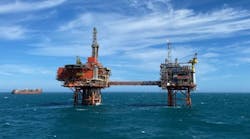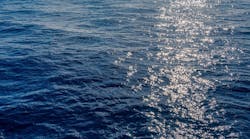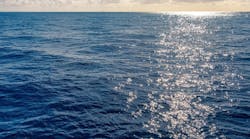John Waggoner • Houston
Offshore rig demand seen brighter in 2010
Long-term demand for deepwater facilities remains strong, analysts say. Some of the enthusiasm for recovery of a market hit by low commodity prices and strangled by credit restrictions has to do with regions that are relative newcomers to the offshore oil and gas industry.
Israel and Libya are heating up with recent discoveries, while former giant Mexico is also promising, analysts say. If and when natural gas prices improve, the Gulf of Mexico is also likely to stir to life again.
While demand in Brazil and West Africa remains robust in the near term, the remainder of 2009 is likely to be tepid even for the deepwater floaters that have, in recent months, commanded higher day rates, analysts say.
Tender activity is still weak overall, especially for shallow and midwater markets according to Pritchard Capital Partners. But with oil recently hovering above $70/bbl, the gloom of earlier this year is passing.
Jackups are still being stacked and some in the industry now suggest that the best solution would be to simply dismantle some older rigs with outdated technology to help oxygenate a market drowning in oversupply.
There are signs though, that the ague of the global economic crisis is passing. With the improvements in financial markets and recovery of oil prices, bright spots have started to appear on the horizon for regions that up until now were generally overlooked as major plays in the oil patch.
Parts of the Mediterranean, including Lybia’s Sirte basin and the recent discoveries in Israel, are some of these new markets. Mexico is showing promise as well, with new tenders awaited from Pemex, and firm demand within high margin services such as water-gas separation, Pritchard says.
However, the new tenders from Pemex, ONGC, Saudi Aramco, and others including offshore Nigeria, are likely to be highly competitive with many contractors eager to bring new business onto the books after a weak first half.
Pritchard says the weak tender activity could lead to even more stack-ups, especially in the jackup market, before 2010.
“Demand from Petrobras remains strong, as well as interest in West Africa, which has outstanding tenders for 36 rig years with start dates in 2010 and 2011,” Pritchard says.
Dayrates for deepwater rigs seem to suggest that the worst may indeed be over.
Noble for example managed win a recent Gulf of Mexico contract at $605,000, compared with from $244,000 for the same facility before, and landed a three-year semi contract in Libya with ExxonMobil at a dayrate of $537,000.
The long term fundamentals of the Gulf of Mexico also remain solid, with the added advantage of extensive infrastructure that makes it possible to bring production online faster than any other region of the world, Pritchard says.
“Rates offering incremental returns above operating costs will likely keep rigs working, resulting in higher utilization and stronger earnings,” Pritchard says.
Brazil’s OGX updates offshore drilling plans
Brazilian oil and gas operator OGX says it is ready to begin drilling offshore block BM-S-29 with its partner and operator Maersk.
OGX raised its stake in the Santos basin block BM-S-29 to 65% from 50% earlier this year, encouraged by the recent discovery by Repsol of hydrocarbons in an adjacent block. Transocean’s Sovereign Explorer will drill BM-S-29.
“We estimate that the drilling of the well 1-MRK-2-SPS will take approximately three months to reach the five objectives identified,” the company says.
Drilling is on schedule to begin in September for OGX’s other blocks where the company has a 100% stake, the company said.
Drilling will begin in September at the Vesuvio prospect in block BM-C-43 of the Campos basin. The company estimates that Diamond Offshore’s rig Ocean Ambassador will take about 45 days to drill to the objectives. This block is about 85 km (53 mi) from shore at a water depth of 140 m (459 ft).
OGX expects to start drilling four more wells by the end of 2009. Of the six wells to be drilled in Campos and Santos, three will be finalized by the end of the year, the company says. Drilling rigs Sea Explorer and Ocean Quest are expected to arrive in September and November, respectively.
OGX earlier this year opened its state of the art operational support facility with Schlumberger and other suppliers with advanced data transmission technology and specially designed software for real time operations.
Angola’s Cabinda Gulf find confirms promising trend
Chevron’s intense drilling offshore Angola has again hit pay, this time a natural gas condensate and crude oil discovery in the greater Vanza/Longui area off the coastline of Cabinda province.
This discovery was in the deeper, western side (“area B”) of block 0, where other discoveries are being appraised. Well 79-3XST1 found over 225 ft (69m) of net hydrocarbon pay in the Upper Pinda formation, according to Cabinda Gulf Oil Co (CABGOC), which is operated by Chevron.
The well was tested from a single 150-ft (46-m) perforated interval and flowed at a rate of 11.6 MMcf/d of natural gas and 2,550 b/d of liquid hydrocarbons, the company says.
According to CABGOC, the discovery extends a trend of undeveloped natural gas condensate and crude oil discoveries in the Greater Vanza Longui Area that are currently undergoing appraisal.
Chevron, through CABGOC, has a 39.2% interest and is the operator of the block 0 contractor group. Other partners include SONANGOL (41%), Total E&P (10%), and ENI Angola Production (9.8%).
While Chevron appraises its “area B” discoveries, closer to the Cabinda coastline, development of “area A” of block 0 is now underway with first oil from Mafumeira Norte. Initial production was announced in July.
The project has 14 wells that are connected to the Kungulo water injection platform, with development expected to reach maximum total production of 30,000 b/d of crude oil and 30 MMcf/d of natural gas in 2011.
More drilling, infrastructure, and debottlenecking projects are planned in the vicinity.
Schlumberger combines sand screen units
Schlumberger has organized its sand screen and inflow control device products under a single banner. Axel Destremau, VP Sand Management Services said the company plans to open a new facility in Saudi Arabia this October and has plans to double the size if its Houston manufacturing plant.
Schlumberger says it sees three individual environments for screens, depending upon application. These are:
- Heavy oil/extreme conditions – These screens compete with traditional slot screens.
- Brownfields – These screens need to be versatile and highly productive.
- Deepwater – This requires robust and reliable equipment which does not fail because of the critical conditions and expense of operations.
A growing application for inflow control devices is long horizontal wells. This technology cuts across most of the different operating arenas.




